| Premium midsize car; Built in USA |
|
|
| Good condition price range: $1,800 – $3,500* |
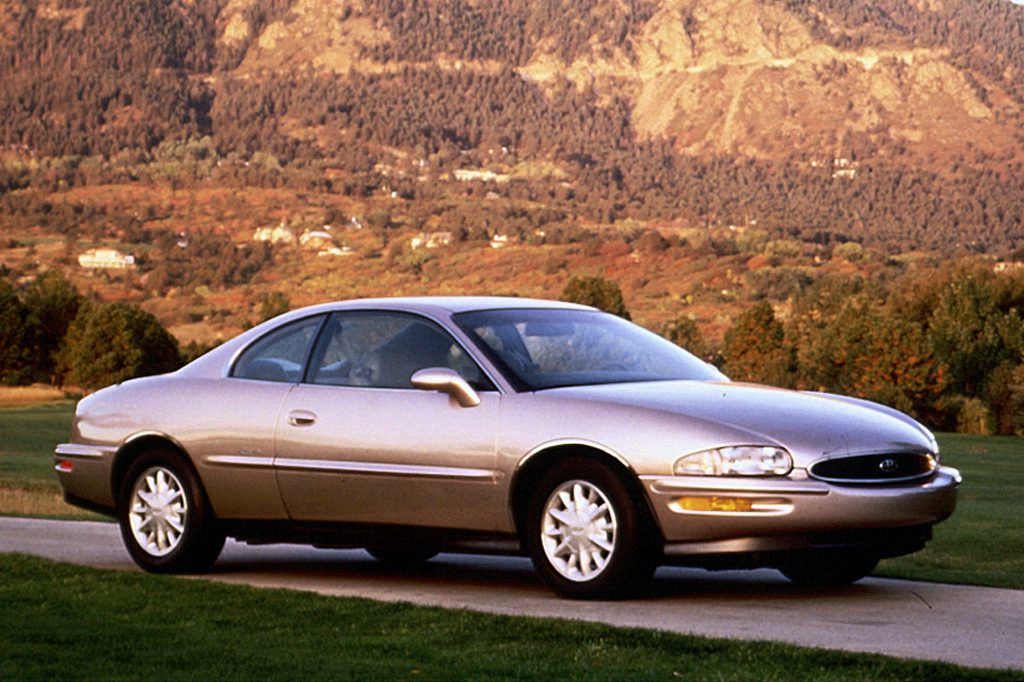
1995 Buick Riviera
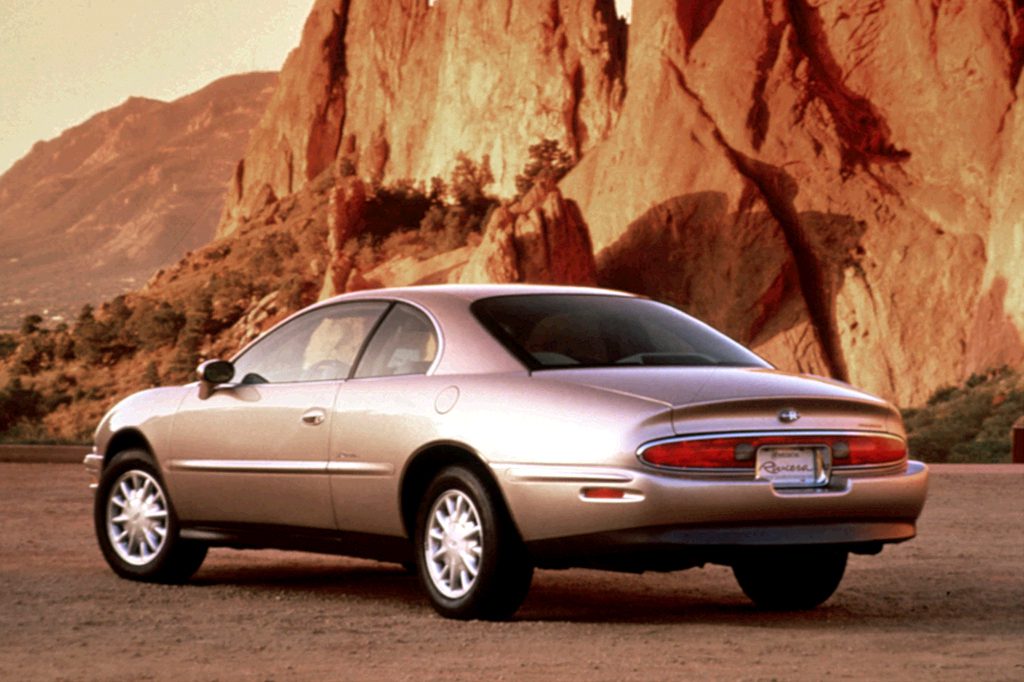
1995 Buick Riviera
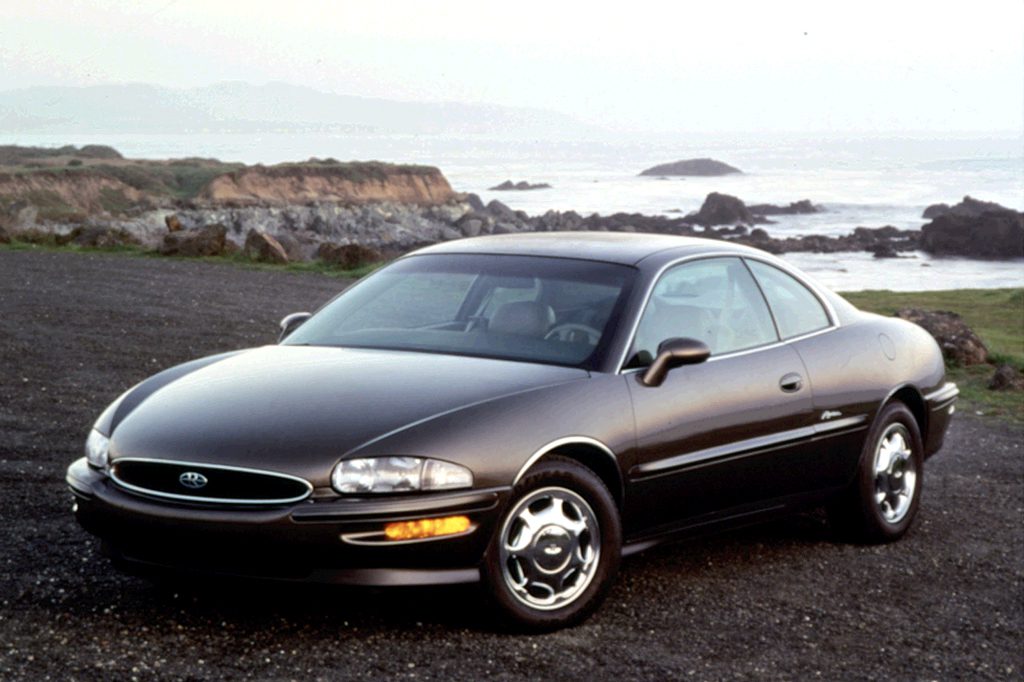
1996 Buick Riviera
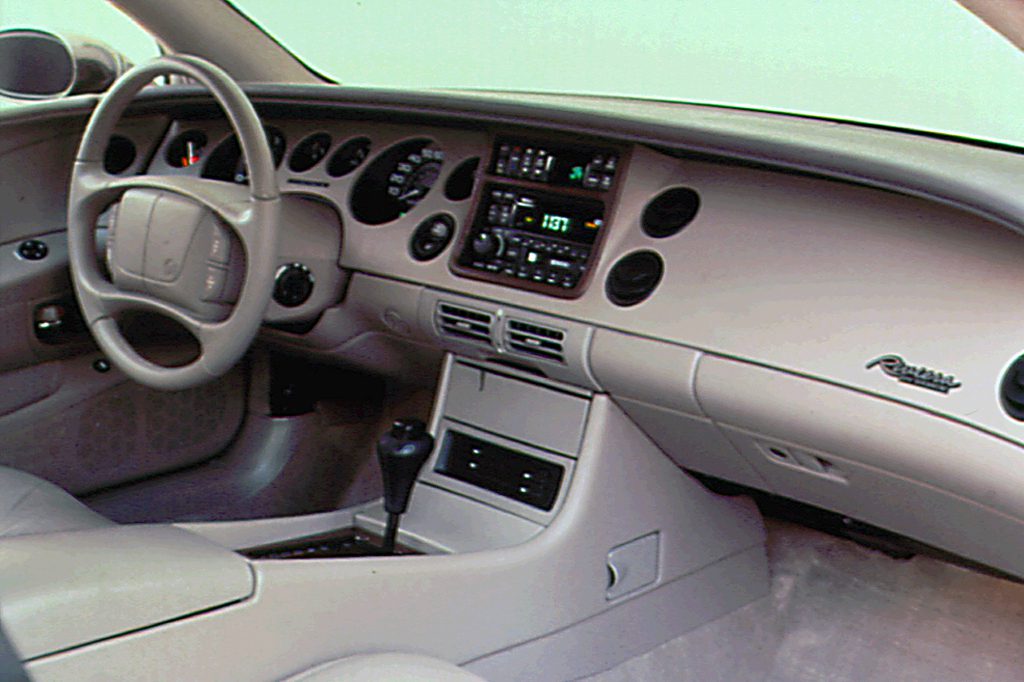
1996 Buick Riviera interior
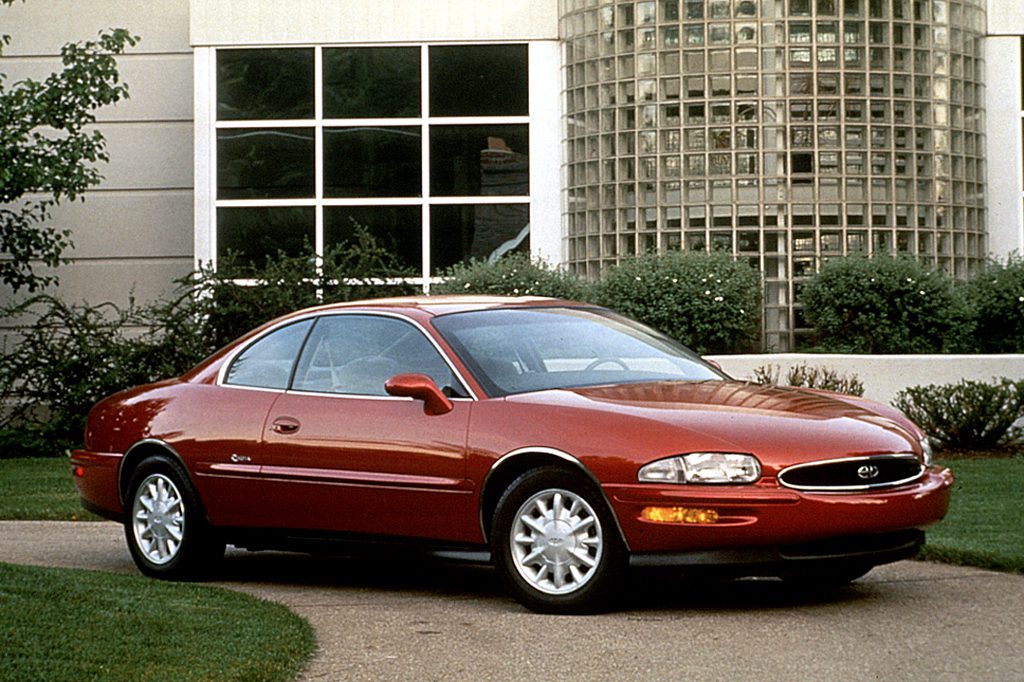
1997 Buick Riviera
| Pros: |
|
| Cons: |
|
Buick aimed the Riviera against such 2-door contenders as the Acura Legend Coupe, Cadillac Eldorado, Lincoln Mark VIII, and Mercedes E320. If the styling appeals, it’s worth a serious test drive. If not, you might prefer to shop elsewhere.
Overview
After a season’s absence from the lineup, this redesigned version of Buick’s luxury coupe went on sale in spring 1994, as an early ’95 model. The new Riviera was nine inches longer, 1.9 inches wider, a couple of hundred pounds heavier, and more powerful than its predecessor. Although Riviera was built on the same front-drive platform as the Oldsmobile Aurora sedan, the two cars shared no styling or interior features or major mechanical details. Rivieras came in a single price level, with a standard “3800” 3.8-liter V6 engine. Shoppers who craved more get-up-and-go could select a supercharged version of the V6, producing 225 horsepower (20 more than standard). A 3-place front bench seat was standard; leather buckets optional. The new interior had dual airbags, full analog instrumentation, and 6-way power front seats. Antilock brakes were standard; traction control optional.
Yearly Updates
| 1996 Riviera A new version of GM’s supercharged 3.8-liter V6 engine became optional under Riviera hoods. Named 3800 Series II, that engine produces 240 horsepower (15 more than in 1995). New spark plugs in both engines were designed to last 100,000 miles. Coolant was supposed to last 5 years or 100,000 miles. Riviera’s standard keyless entry system added a new Personal Choice feature. The remote-entry transmitter can automatically adjust the driver’s seat, outside mirrors, automatic door locks, lighting, and other accessories to one of two settings. |
| 1997 Riviera Only minor changes hit the Riviera for ’97. New features included standard daytime running lights and a new electronic torque converter clutch. |
| 1998 Riviera Buick dropped the base 205-horsepower engine and made the supercharged 240-horsepower engine standard. Also dropped was the front bench seat. |
| 1999 Riviera Slow sales prompted Buick to stop production of its luxury coupe in midyear–only about 2000 made it out the door. Of those, 200 or so were Silver Arrow models that sported distinctive silver exterior paint and special logos. There were no other changes for 1999. |
